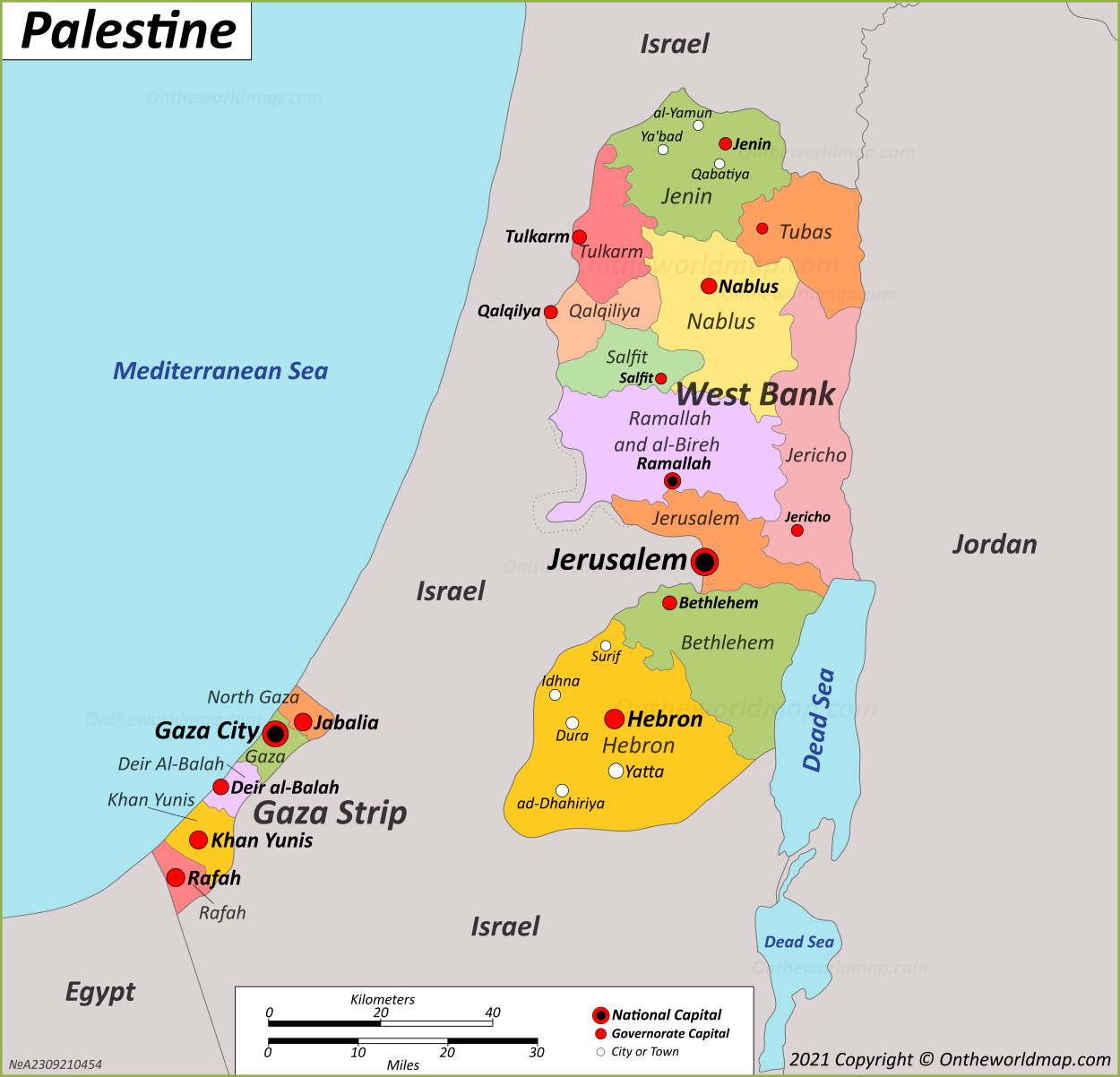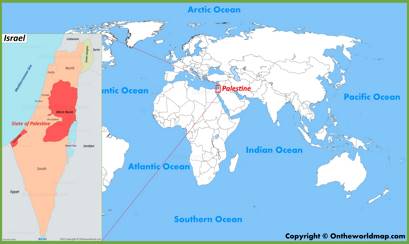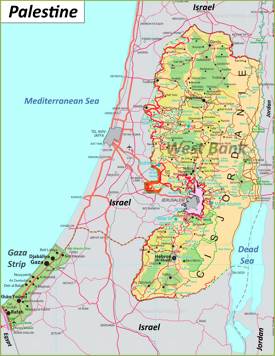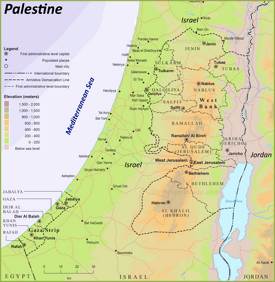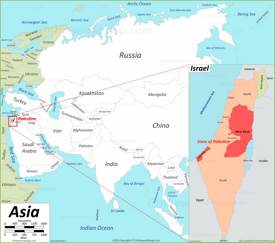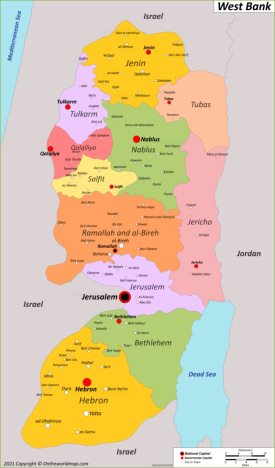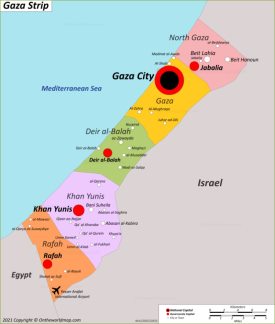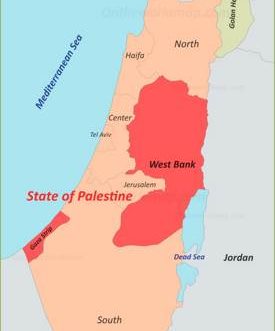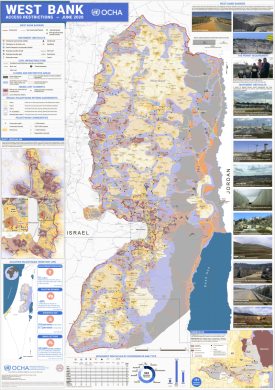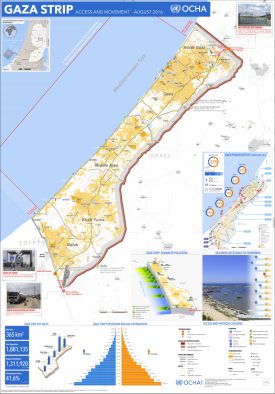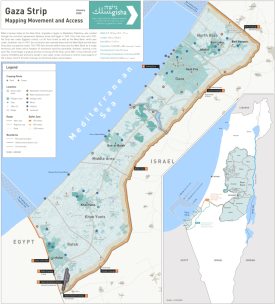Palestine Map
Description:
This map shows governmental boundaries of countries; West Bank, Gaza Strip, governorates, governorate capital cities, and major cities and towns in Palestine.
You may download, print or use the above map for educational, personal and non-commercial purposes. Attribution is required. For any website, blog, scientific research or e-book, you must place a hyperlink (to this page) with an attribution next to the image used.
Online Map of Palestine
About Palestine
Palestine, officially the State of Palestine, exists as a sovereign state in Western Asia, spanning parts of the historical region of Palestine. The state claims the West Bank and Gaza Strip territories, with East Jerusalem designated as its capital, though it maintains limited self-governance over these areas.
The territory borders Israel to the west, north, and south, while Jordan lies to the east, and Egypt borders the Gaza Strip's southwestern edge. The total claimed area encompasses approximately 2,320 square miles (6,020 square kilometers), though the actual controlled territory remains significantly smaller due to ongoing territorial disputes.
The Palestinian population numbers approximately 5.5 million people across the West Bank and Gaza Strip, with significant demographic growth rates. The population density varies dramatically between regions, with Gaza ranking among the world's most densely populated areas. Arabic serves as the official language, while Hebrew and English maintain widespread usage in business and administration.
Major urban centers include East Jerusalem (claimed capital), Ramallah (administrative center), Gaza City, Nablus, and Hebron. Ramallah functions as the de facto administrative capital, hosting most governmental institutions and foreign diplomatic missions. The city has developed into a significant economic and cultural hub, featuring modern infrastructure and educational institutions.
The Palestinian economy faces substantial challenges due to movement restrictions, limited control over natural resources, and dependency on foreign aid. Services sector dominates the economy, contributing about 60% of the GDP, followed by industry and agriculture. The information technology sector has emerged as a growing segment, particularly in the West Bank. Olive cultivation and stone quarrying represent traditional economic activities that continue to provide significant employment.
The education system serves as a cornerstone of Palestinian society, with a literacy rate exceeding 97%. Multiple universities operate across the territories, including Birzeit University near Ramallah and An-Najah National University in Nablus. The healthcare system operates under challenging conditions, with a mix of public, private, and NGO-operated facilities providing medical services.
Water resources remain a critical issue, with limited access to aquifers and heavy dependence on external sources. The territory experiences a Mediterranean climate, characterized by hot, dry summers and mild, wet winters. The landscape varies from coastal plains in Gaza to highlands in the West Bank, with the Dead Sea marking the lowest elevation point on Earth at its eastern border.
The Palestinian Monetary Authority issues the Palestine pound, though Israeli shekel, Jordanian dinar, and US dollar circulate widely in daily transactions. International trade occurs primarily through Israel, with additional routes through Jordan and Egypt, subject to varying restrictions and protocols.
The Facts:Capital: Jerusalem, Ramallah.
Area: 2,320 sq mi (6,020 sq km).
Population: ~ 5,483,450 (2023 estimate).
Official language: Arabic.
Currency: Egyptian pound (EGP), Israeli new shekel (ILS), Jordanian dinar (JOD).
Largest cities: Abasan al-Kabira, Abu Dis, Bani Na'im, Bani Suheila, Beit Hanoun, Beit Jala, Beit Lahia, Beit Sahour, Beit Ummar, Beitunia, Bethlehem, al-Bireh, Deir al-Balah, ad-Dhahiriya, Dura, Gaza City, Halhul, Hebron, Idhna, Jabalia, Jenin, Jericho, Khan Yunis, Nablus, Qabatiya, Qalqilya, Rafah, Ramallah, Sa'ir, as-Samu, Surif, Tubas, Tulkarm, Ya'bad, al-Yamun, Yatta, az-Zawayda.
Regions of Palestine: West Bank, Gaza Strip.
Governorates of Palestine: Jenin, Tubas, Tulkarm, Nablus, Qalqilya, Salfit, Ramallah and Al-Bireh, Jericho, Jerusalem, Bethlehem, Hebron, North Gaza, Gaza, Deir al-Balah, Khan Yunis, Rafah.

